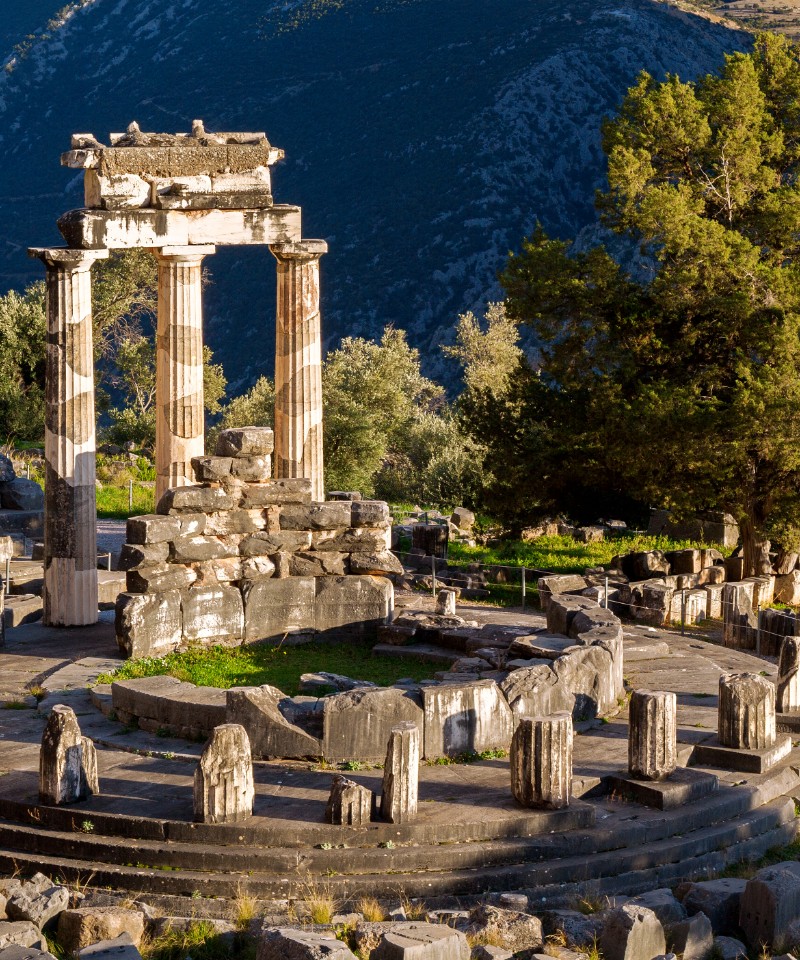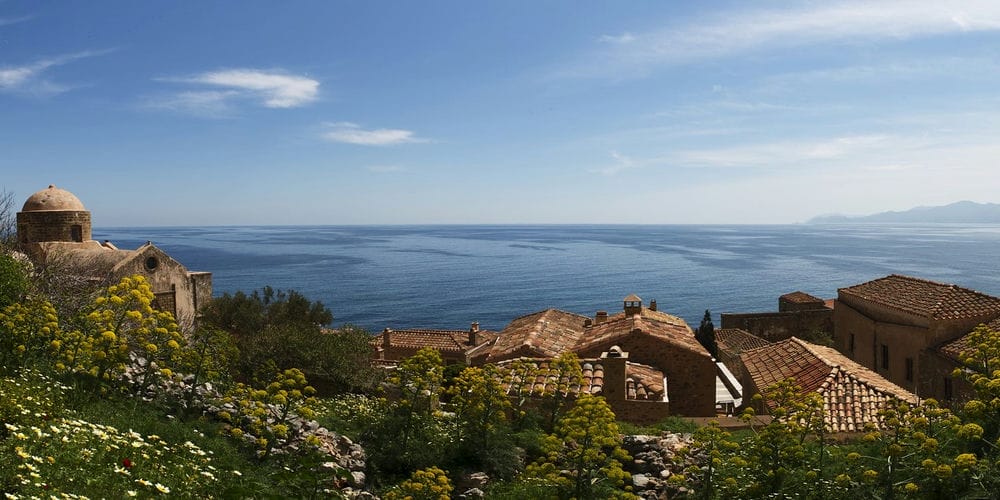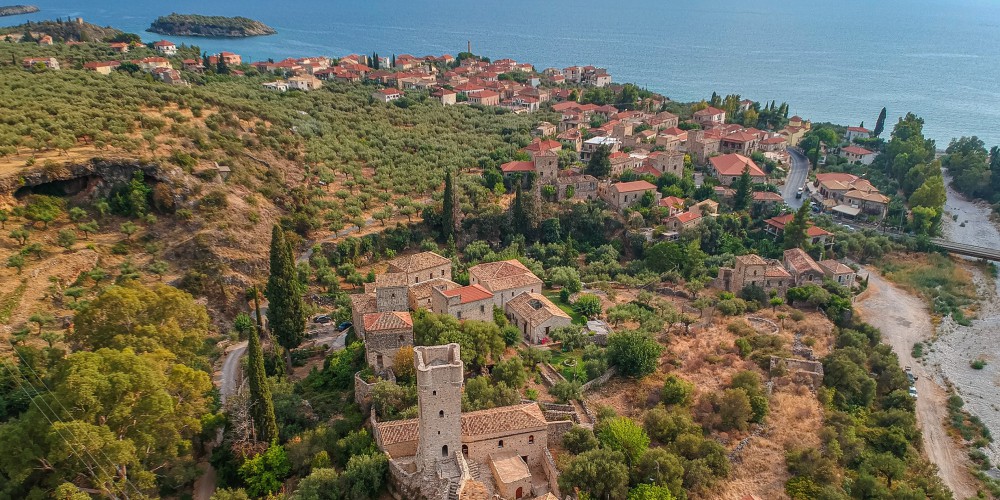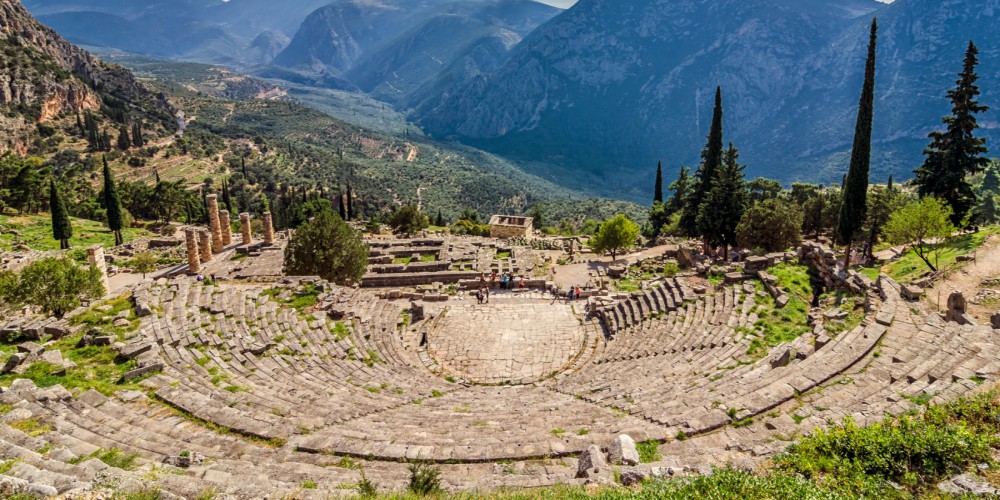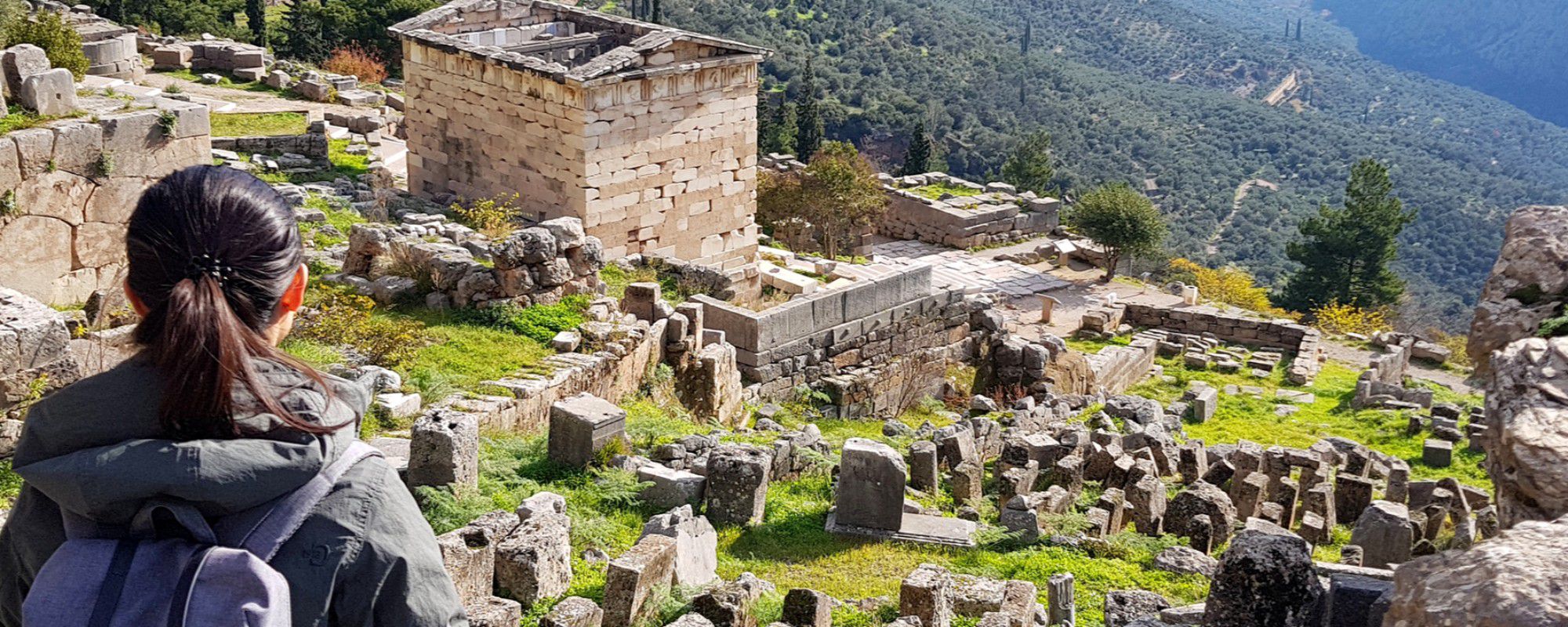
Top 10 Things to Do in Delphi
Key Takeaways
- In ancient times, Delphi was considered the 'naval of the earth' and was home to the Oracle of Delphi. Explore the extensive ruins, including the Temple of Apollo, the ancient theater, and the stadium.
- Adjacent to the archaeological site, the museum houses a vast collection of artifacts from Delphi and surrounding areas.
- Delphi is nestled on the slopes of Mount Parnassus, providing panoramic views of the valley below.
- Located near Delphi, the Corycian Cave is a natural wonder worth exploring. Embark on a guided tour to witness stunning stalactite and stalagmite formations.
Did you come across Delphi while reading our Athens travel guide, and now you're thinking about spending some time in this wonderful destination? Here are the top 10 things to do in Delphi for you to experience your trip to the maximum!
Right at the foothill of Mount Parnassus in central Greece lies Delphi, one of the most important archaeological sites of the ancient Greek world.
The seat of the high priestess of the oracle of Apollo is found in the shadow of Phaedriades Rocks, two awe-inspiring natural rock formations over 700m high dominating the landscape.
The history of the site goes back to prehistoric times, especially from the 6th to the 4th century BC when Delphi reached its Golden Age.
As a panhellenic oracle site, ancient Greek city-states and foreign rulers rivaled each other in regard to Apollo's offerings, accumulating an enormous amount of wealth and decorating the site with architectural wonders.
According to ancient Greeks, Apollo was the god of the sun and light and the patron god of all arts. By being one of the oldest gods of the Greek pantheon, he was one of the most complex yet popular deities of the ancient world.
Always depicted as a radiant, handsome young man, his most common attributes were the bow and arrow and the ancient musical instrument of kithára or lyre.
When people used to call upon him, they were often using the epithet Phoebus, which literally translates to 'bright.' Alongside his twin sister, Artemis, the goddess of hunting, they are the never-aging teens of the Olympians.
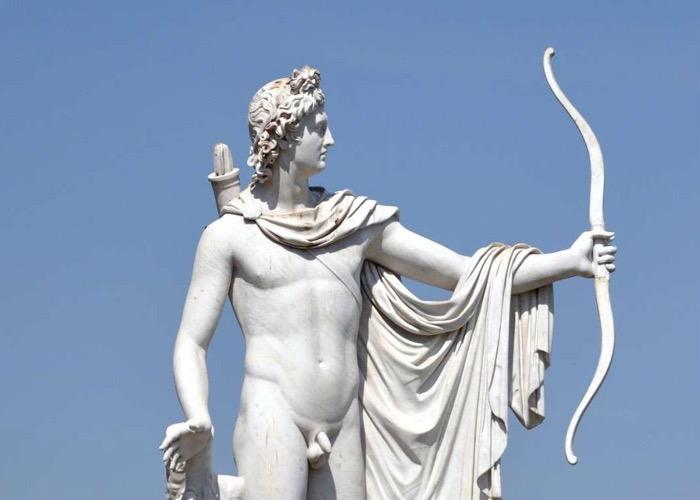
Apollo was the son of Zeus and Leto, the granddaughter of Uranus (Heaven) and Gaia (Earth).
When Hera realized that Leto was pregnant by her husband, she immediately demanded from all the Lands of the world not to allow Leto to give birth to them and then forbade the rest of the Gods to help her.
The heavily pregnant Leto wandered the world in vain, not being able to find a place to hide from the jealous Queen of the Gods.
After her many requests, the floating island of Delos took pity on her and allowed her to give birth on its land. By the time Leto set foot on Delos, four pillars emerged from the earth to immobilize the island.
After nine days of sheer agony, Eileithyia, the goddess of childbirth, came to Leto’s assistance, and the twin gods, Apollo and Artemis, were born.
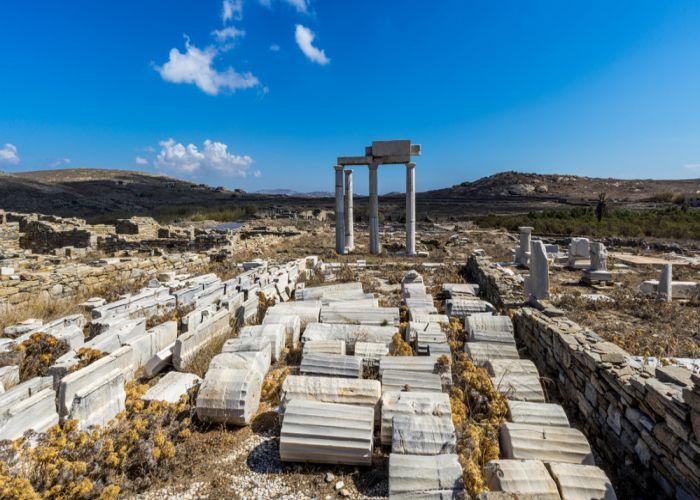
Apollo learned the art of soothsaying from the goat-like god, Pan. During his journeys around the world, he visited the place where people believed the navel of the earth was located. There, an ancient oracle stood, terrorized by the presence of the beast Python, a frightening serpent responsible for the devastation of the valley of Kríssa.
Apollo faced and slaughtered the beast, liberating the land and the Nymphs of the area. On the spot where fumes from a chasm on the surface of the Earth were emitted, he founded his oracle and established his cult, and this is how the panhellenic oracle of Delphi came to be.
According to Greek mythology, the god transformed himself into a dolphin, transporting the first priests of his cult from the island of Crete.
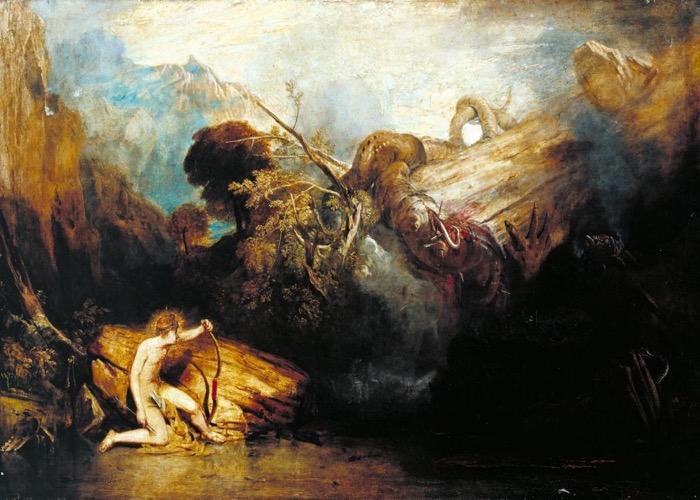
After his victory over Python and the conquest of the lands of Delphi, Apollo, overly proud of himself, started mocking Eros, the god of love:
“What are you doing with powerful weapons, naughty boy?”;
“that equipment of yours fits my shoulders, which are able to give certain wounds to the wild animals and to the enemies, which recently killed the swollen Python with countless arrows, the Python who was pressing down so many acres with his disease-bearing stomach! You will be content to provoke some love by your fire, not to claim my honors.”
Eros, insulted by Apollo’s words, decided to revenge the god by making him mad in love with the Nymph Daphne.
Even though Apollo had his heart set on her, she refused to give in to him. Blinded by his passion, Apollo chased poor Daphne through the woods of mount Parnassus.
Eventually, the god captured her, but she desperately screamed for her father, Peneus, requesting her salvation. Immediately, her body got petrified and thin bark covered her skin. Her arms turned into branches, and her hair transformed into the foliage.
The god vowed to love her forever, and after granting immortality to the laurel tree his love had turned into, he made a crown out of its leaves. The Bay laurel became his sacred tree, and legend has it that these leaves never decay.
The Oracle of Delphi
Delphi has long been considered the center of the earth, and as they said, Zeus himself called it the ‘navel of the Earth.’
According to legend, Python, a huge snake, guarded the place until he was killed by Apollo. When the god's arrows pierced the reptile, his body fell into a crack in the ground, and as his carcass rotted, vapors rose. Anyone standing above this crack suddenly fell into an ecstasy that was often violent.
They believed that these people were possessed by Apollo, who flooded them with his divine presence.
During the Mycenaean Age, these bizarre events attracted the worshipers of Apollo, and slowly, the primitive sanctuary became an altar and, later, in the 7th century BC, a temple that housed a single person that served as a bridge between him and the other world. It was the fortune teller, Pythia, who took her name from the big snake.
Pythia played an ancient and very important role - a role that transcended itself and passed into the legend.
Because she was very important in Ancient Greece, she had to be completely unknown and had to break all ties with her previous life for the sake of Apollo and his divine status. Pythia also served in an ambitious and religious culture.
This visual and verbal connection with the gods was treated with the utmost respect.
Because it was believed that during the winter months, Apollo left the temple, Pythia received questions from people from all of Greek society during the nine warmest months of the year, on the seventh day of each month.
Pythia was purified by fasting, drinking holy water, and washing her body in the sacred Castalia Fountain. She then sat on a tripod above the crack, holding bay leaves in one hand and a container of spring water in the other.
As the fumes from the ancient defeated reptile enveloped her, she passed into the kingdom of the god.
People flocked from all over the world to talk to the woman who communicated with the gods and to travel to Delphi many traveled for days, even weeks.
According to some narrations, the fortune-tellers did answer, although there are reports that Pythia uttered incomprehensible words, which the priests "interpreted" in the form of verses.
After receiving his oracle, the beggar returned to his homeland to do what he had been told. Pythia received many visitors in the nine days it was available, from farmers desperately asking for their harvest to emperors asking how they had to fight their enemies, but its spells were not always clear.
Very soon, no one made a serious decision without consulting Pythia. Apart from the Greeks, foreign officials, leaders, and kings traveled to Delphi for an opportunity to ask their questions.
Those who had money paid to bypass the long queues of pilgrims. Thanks to donations, the temple grew in size, as did its reputation, and Delphi prospered by attracting visitors to the Pythian Games, a forerunner of the Olympics.
Visit the Temple of Apollo
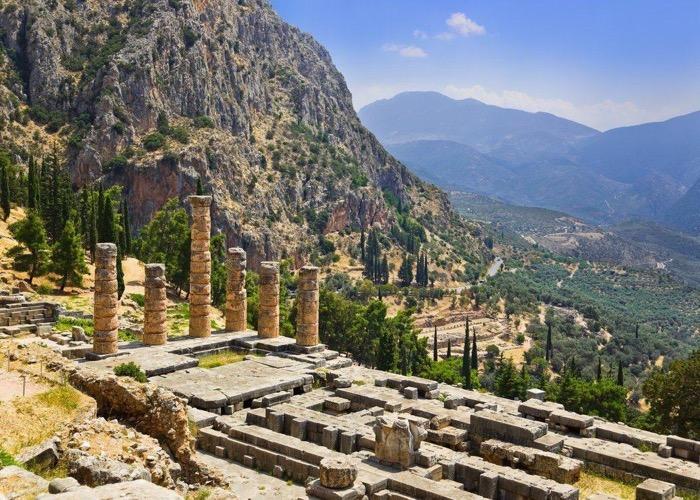
Located at the end of the Sacred Way, the Temple of Apollo was the center of the god’s cult and the seat of the high priestess Pythia.
The importance of the site dictated the erection of the temple with money that was collected from all the Greek city-states in conjunction with some from the foreign rulers as well.
The deepest chamber of the temple, 'Adyton,' was only accessible by Pythia and the priests when she was delivering the prophecies of Apollo.
The existing ruins on the site belong to the latest phase of the building, succeeding older ones made out of stone, copper, beeswax, and feathers or even entirely made out of laurel leaves!
On its walls, sayings of the Seven Sages were inscribed, such as the famous quote ‘Know thyself' by Thales of Miletus.
Discover the Treasury of Athens
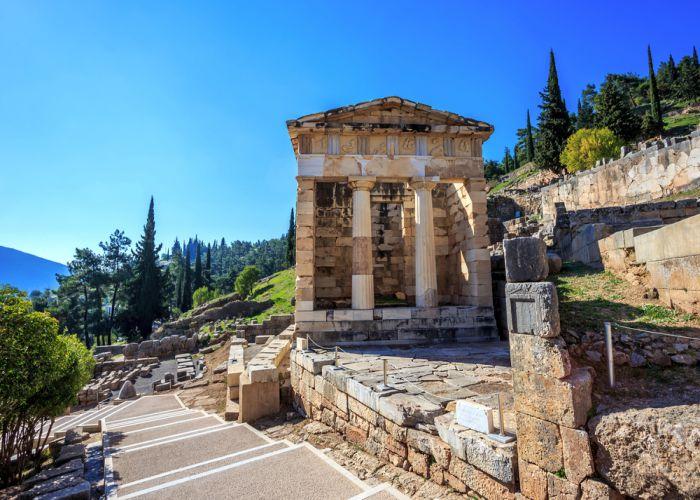
While ascending the Sacred Way, after its first turn, a small temple-like doric building was erected by the city-state of Athens in order to house dedications and votive offerings of Athens to the sanctuary of Apollo.
By being one of the first public buildings sponsored by Athens, it is considered to be a symbol of Athenian Democracy after the fall of tyranny.
According to Pausanias, the traveler of the 2nd century AD, the Treasury was built as an offering right after the victory of the battle of Salamis in 490 BC.
Entirely constructed out of Parian Marble, its walls hold inscriptions offering valuable information concerning the festivals and customs of the ancient world or even insights into ancient Greek music.
Admire the Theater and the Stadium of Delphi
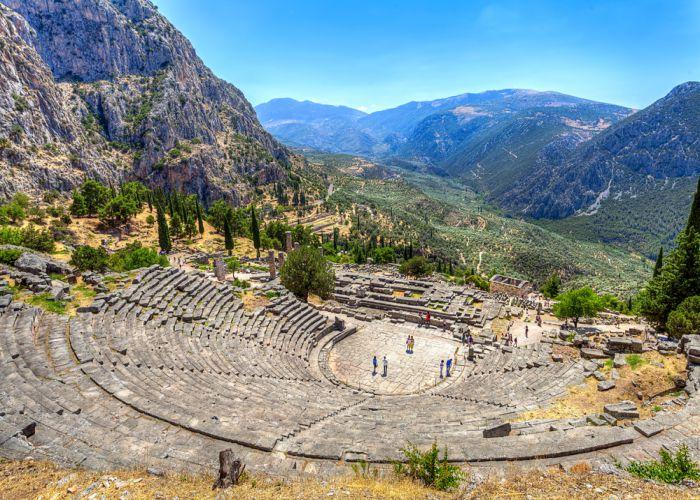
Right next to Apollo’s temple lies the ancient theater of Delphi, capable of hosting a crowd of about 5000 people. The theater hosted mostly musical contests, which were part of the Pythian Games, one of the four Panhellenic Games of ancient Greece.
The first stone theater was built in the 4th century BC but the ruins, which are still visible nowadays, date back to the early Roman times when theatrical contests were introduced.
Following the tier of the theater to the west and ascending to the highest level of the site, you are entering the Stadium of Delphi, the best surviving stadium of antiquity in Greece! Do not miss the stone áphesis (starting point) controlling up to 20 athletes simultaneously!
Visit Tholos of Delphi
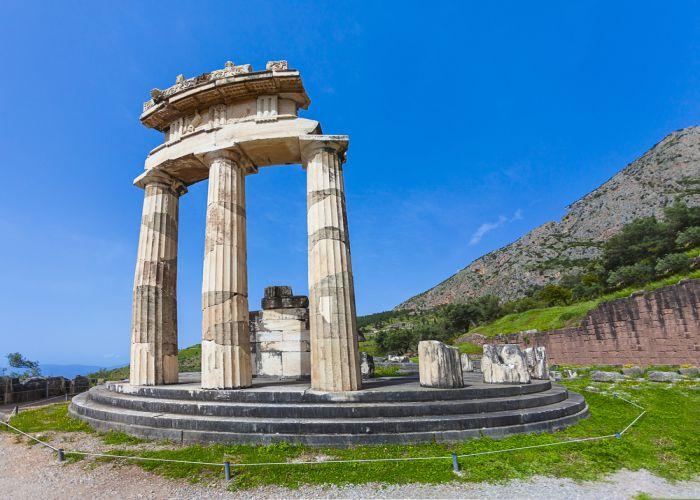
Although in the site of Delphi, Tholos is one of the buildings belonging to the sanctuary of Athena Pronaia (the one standing before the Temple). Dated to the 4th century BC, it is the most iconic ancient building on the site.
Located between the Treasury of the Massalians and the Temple of Athena, the small elegant circular incorporated different kinds of marble, resulting in a mesmerizing effect. It stands as one of the miracles of classical architecture.
Explore the Archaeological Museum of Delphi
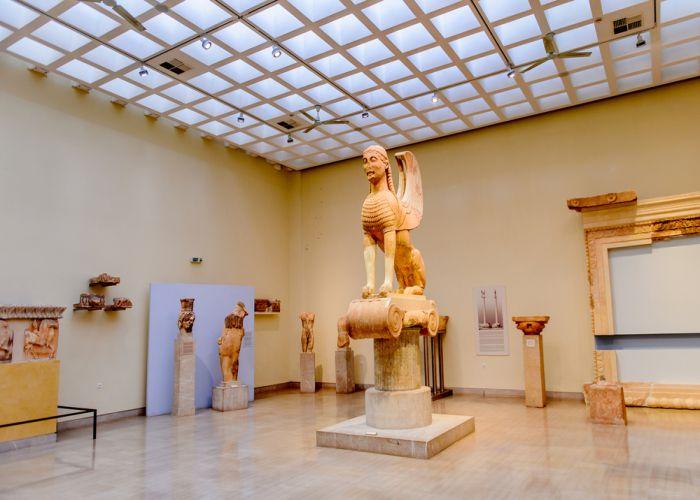
Firstly founded after the completion of the archaeological excavations on the site, the Archaeological Museum of Delphi hosts the miraculous finds of the site, consisting of one of the most important museums of Greece and a crucial ambassador of ancient Greek art.
Wander around its over 2000 m2 and explore extraordinary pieces of art covering from prehistoric to late Byzantine times.
Do not miss the Treasury of the Siphnians, Heniokhos, the Charioteer of Delphi, or the chryselephantine statues of Apollo and Artemis. It is a perfect stop for your trip to Greece in winter or summer.
Visit the traditional village of Chrissó
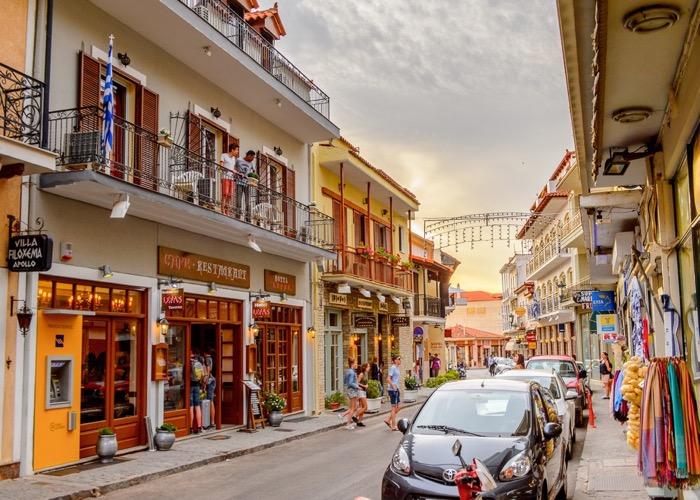
Some 6 km west of the site of Delphi lies the village of Chrissó, situated where the ancient city of Kríssa used to be.
The modern village of Chrissó, protected as a monument by the Greek state, offers a great opportunity for the visitor to wander around its cobblestone-paved narrow streets and admire its remarkable neoclassical architecture of the 19th century.
Nowadays, the village is renounced for its olive groves and its olive oil (and other side-products) tradition.
Do not miss the church of St. George located at the ancient acropolis of the city, and don't miss the chance to have a coffee break at the village’s square under its centuries-old plane tree. Visiting this village is one of the best things to do in Delphi, Greece.
Museum of Delphic Festivals
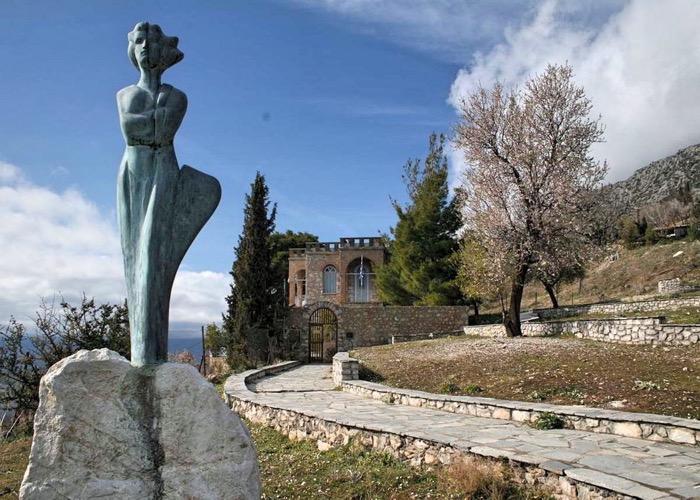
The Museum of Delphic Festivals is housed in 1927, a neo-gothic tower-like house located right next to the archaeological site. This house used to be the residence of the great Greek poet Angelos Sikielianos and his American-born wife, Eva Palmer-Sikielianos.
A not-to-miss place for fans of ancient drama, the museum hosts an extended collection of artifacts related to the representation of ancient festivals and drama.
If you have some extra time and don't know what to see in Delphi, get to know about the Pyrrhic dance, an ancient Greek war dance, or see the costumes designed and handmade by Eva Palmer for performances held during the Delphic Festivals.
Visit the scenic village of Arachova.
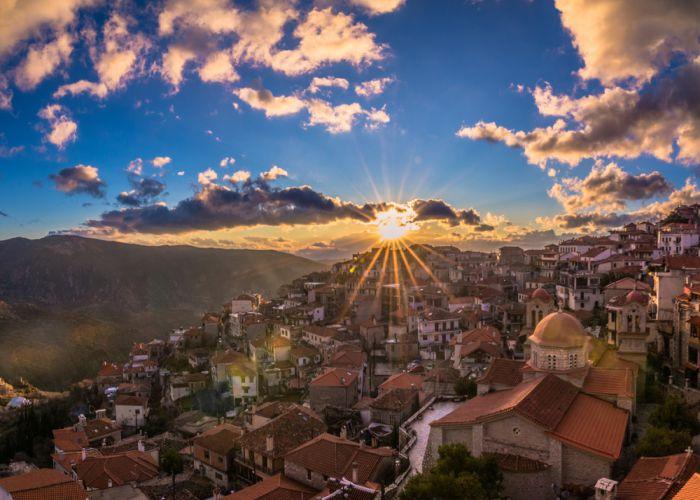
On your way to Delphi, you will drive most likely be through the town of Aráchova, one of the most popular places to visit around Delphi! A favorite meeting point for ski lovers, the picturesque town, with its stone houses and narrow alleys, offers numerous options to the visitor.
Some famous visitors of Arachova were Maria Callas, Winston Churchill, the Beatles, and Jackie Kennedy Onassis, among others.
Wondering what to do in Delphi? Spend some time on top of the rock Tyriás, where the 19th-century clock of the town is located, or visit the impressive church of St. George!
Explore Galaxidi
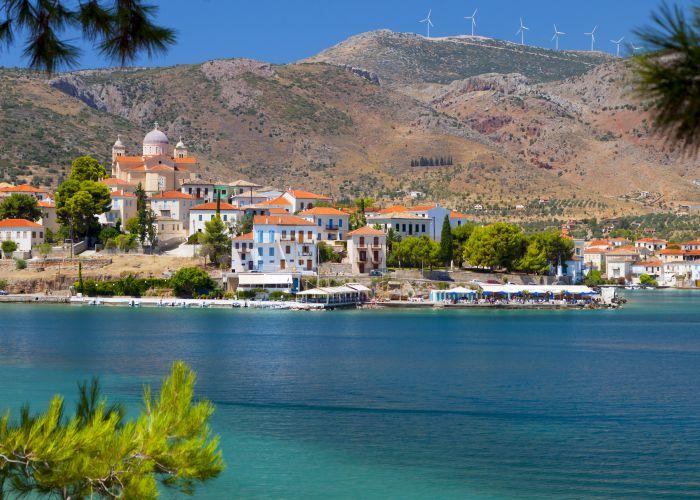
Half an hour away from Delphi, the town of Galaxidi lies on the mouth of the Gulf of Itéa.
One of the most beautiful seaside settlements of the region, it is located on the grounds of the ancient 'Hellion', Galaxidi was always a strategic naval settlement of the Corinthian Gulf.
Apart from its ancient history, the town played an important role in the modern history of Greece as well. Nowadays, the visitor can walk among the beautiful neoclassical houses of the 19th century and explore the town’s vast history in the Archaeological Museum or in the Maritime Museum at the old Town Hall.
The best time to visit Galaxidi is on Clean Monday when the festival of Alevromoutzouroma (literally Flour Smudging, or else Flour Wars) takes place!
Corycian Cave
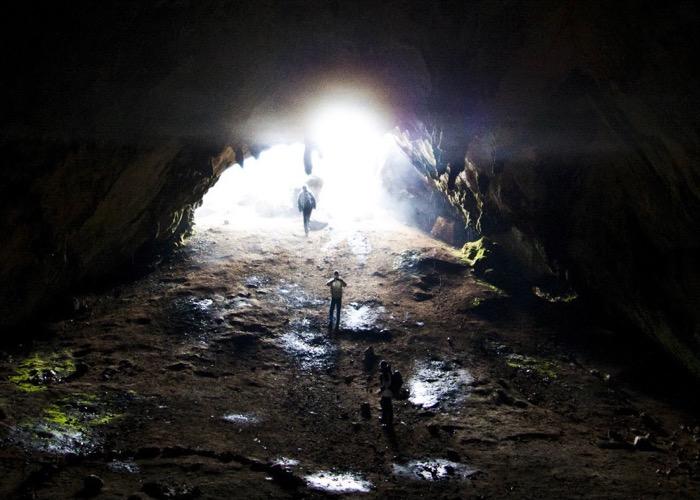
A site not for the fainthearted, Corycian Cave is located above the sanctuary of Delphi. Accessible by a path (European path E4), it is approximately a 3.5-hour walk through the forests of Mount Parnassus.
Although the cave has been in use since Neolithic times, the grotto is associated with the cult of the goat-like god Pan and the Nymphs.
According to ancient Greek mythology, the cave was named after Nymph Corycia, one of Apollo’s partners. The grotto was part of the pilgrimage to the sanctuary of Apollo.
It is also described by Pausanias in the 2nd century AD. For those who long for a trekking/hiking activity at Delphi, the Corycian Cave is an ideal opportunity. Ask for the starting point of the path near the Delphi Archaeological Museum and prepare yourselves for a unique experience!
Final Thoughts
Although the sanctuary of Apollo is the point of interest for visitors, Delphi offers more than meets the eye and is an excellent spot to spend Christmas in Greece! Combine your visit to the site with one of these options, discover more about Delphi and its surrounding region, or check out our Greece travel guide or one of our Greece tours and Greece vacation packages!
Planning your trip to Greece? Get in touch with our travel specialists and design your tailor-made vacation plan!
Frequently Asked Questions
How far is Delphi from Athens by car?
How do I get from Athens to Delphi?
How much time do you need in Delphi?






